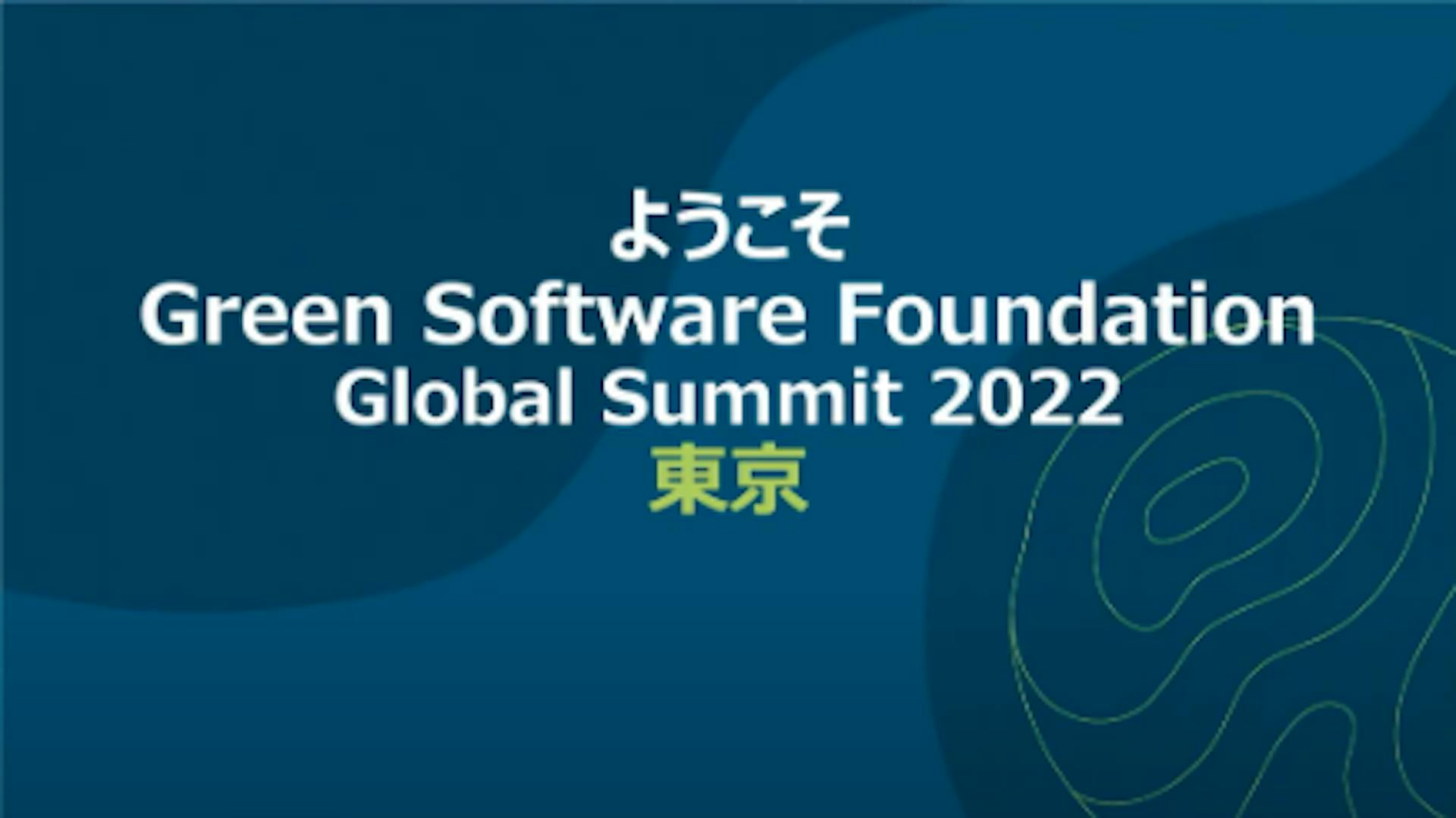INTRO.
We shared the Green Software Foundation vision with 245 people in the audience at GSF Global Summit Tokyo held online on June 10th.
GSF Global Summit is a series of free events. Regional events were held in June 2022 all around the globe. This event was broadcasted from a studio in Tokyo. Microsoft Japan, Intel, Nomura Research Institute, and NTT DATA talked about green software and exchanged their ideas. The Summit attracted audiences and contributed to a growing the presence of Green Software Foundation in Japan as well as a sense of unity among the Japanese members.
Agenda
Introduction to Green Software Foundation - Toru Shimogaki - NTT DATA
What is Green Software & the latest trend - Daiyu Hatakeyama, Microsoft Japan
What is Software Carbon Intensity - Yasumasa Suenaga, NTT DATA
Ecodesign of digital services Kohei Ogawa & Shohei Nagata, Microsoft Japan
The way to utilize the energy-saving functions of hardware with software - Hideaki Doki, Intel
Panel discussion on future Green Software
1.Introduction to Green Software Foundation – To achieve Green Software development - Toru Shimogaki, NTT DATA
Green Software Foundation is a non-profit foundation with 32 organizations and 694 individuals in various industries and consists of four working groups. Our mission is to build a trusted ecosystem for green software engineering. Green software is software that is responsible for emitting fewer greenhouse gases and the focus is reduction, not neutralization. We contribute to the reduction of the environmental impact and will send a message at the time of COP27 in November 2022.
2. What is Green Software & the latest trend - Daiyu Hatakeyama, Microsoft Japan
Green software requires the following three points in the aspect of Scope1 – 3 in GHG Protocol.
To emit minimum greenhouse gases while operating
To work with lower power consumption and less hardware.
To work with renewable energy
It is important to calculate the carbon emissions of software. Green Software Foundation developed an alpha version of Software Carbon Intensity (SCI), a method for scoring the carbon emissions of software operations. Software engineering can manage both business and sustainability successfully.
3. What is Software Carbon Intensity - Yasumasa Suenaga, NTT DATA
Our biggest pain point is how we measure the carbon emissions of software. Green Software Foundation has developed SCI to define a methodology for calculating the rate of carbon emissions for a software system. SCI has become a common language for evaluating green software and we can change the software future with it.
4. Ecodesign of digital services Kohei Ogawa & Shohei Nagata, Microsoft Japan
The use of digital services has negative impacts on the environment. We should evaluate the needs to avoid adding unnecessary capabilities. There are some books and websites on eco-design and tools that can measure the efficiency of websites. It is essential to keep thinking and learning sustainability in the aspect of software engineering.
5. The way to utilize the energy-saving functions of hardware with software - Hideaki Doki, Intel
There are three effective ways to use the energy-saving functions of the hardware.
To rely on hardware development
To use power management and energy-saving libraries
To tune cloud execution and application
Software is important to make hardware work effectively as well as hardware itself. We can make efficient and low-carbon software by understanding hardware functions and utilizing libraries.
6. Panel discussion on future Green Software:
Moderator:
Kenichiro Hamano, NTT DATA
Panelist:
Yasumasa Suenaga, NTT DATA
Daiyu Hatakeyama, Microsoft Japan
Hideaki Doki, Intel
Looking back at the past software, we discussed the present and future software. To develop green software, we should combine the capabilities of the software, hardware, and energy sources and there is room for improvement. We should raise the priority of green software and create a green-software culture through education etc. At last, we called for cooperation with Green Software Foundation activities and closed the lively discussion.
This article is licenced under Creative Commons (CC BY 4.0)

